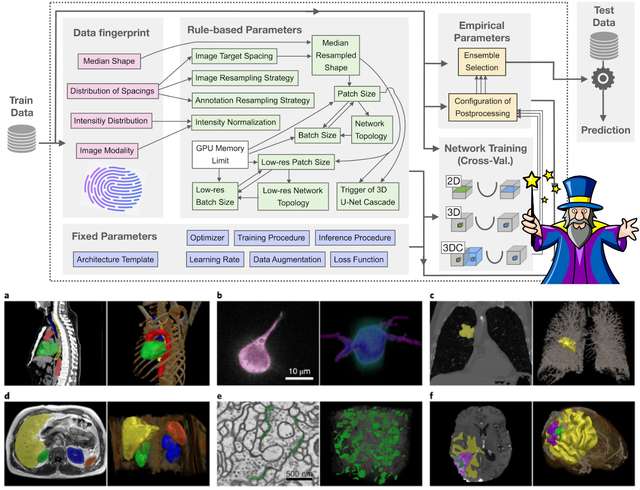nnU-Net
Keywords: semantic segmentation, out-of-the-box, deep learning, U-Net, framework for method development
When confronted with a new dataset, the application of AI-based segmentation methods is non-trivial. Substantial manual effort is required to optimize the network topology, preprocessing, training procedure and inference strategy to the task at hand. Such adaptations are non-trivial and require substantial expertise to ensure optimal performance on each dataset.
Consequently, access to state-of-the-art segmentation methods is often barred to domain researchers who are looking to analyze their data.
nnU-Net systematizes and automates this process, enabling it to be applied out-of-the-box to a wide range of datasets from many different imaging domains. All that is needed to apply nnU-Net is an annotated training dataset. nnU-Net does the rest: at the end of its automated pipeline it will return fully configured and trained U-Net models that can be used to run predictions on new images.
nnU-Net is able to work with both 2D and 3D data. It particularly shines in 3D: we applied it to 23 segmentation competitions with open leaderboards where it placed first in 33/55 segmentation tasks!
nnU-Net's core principle revolves around this differentiation of method parameters into three categories: fixed parameters that do not require adaptations between datasets, parameters that can be inferred from the properties of the presented data (such as image shapes and voxel spacings) as well as empirical parameters. Have a look at our Nature Methods paper to learn more!
Publications
nnU-Net: a self-configuring method for deep learning-based biomedical image segmentation
Isensee F, Jaeger P, Kohl S, Petersen J, Maier-Hein K - Springer Science and Business Media LLC - 2020
Other solutions related to NnU-Net in Helmholtz Imaging CONNECT:
NnU-Net in Helmholtz Imaging CONNECT:
Scanning electron microscope
Data Sheet for FEI Quanta 250 FEG from www.biotech.iastate.edu
